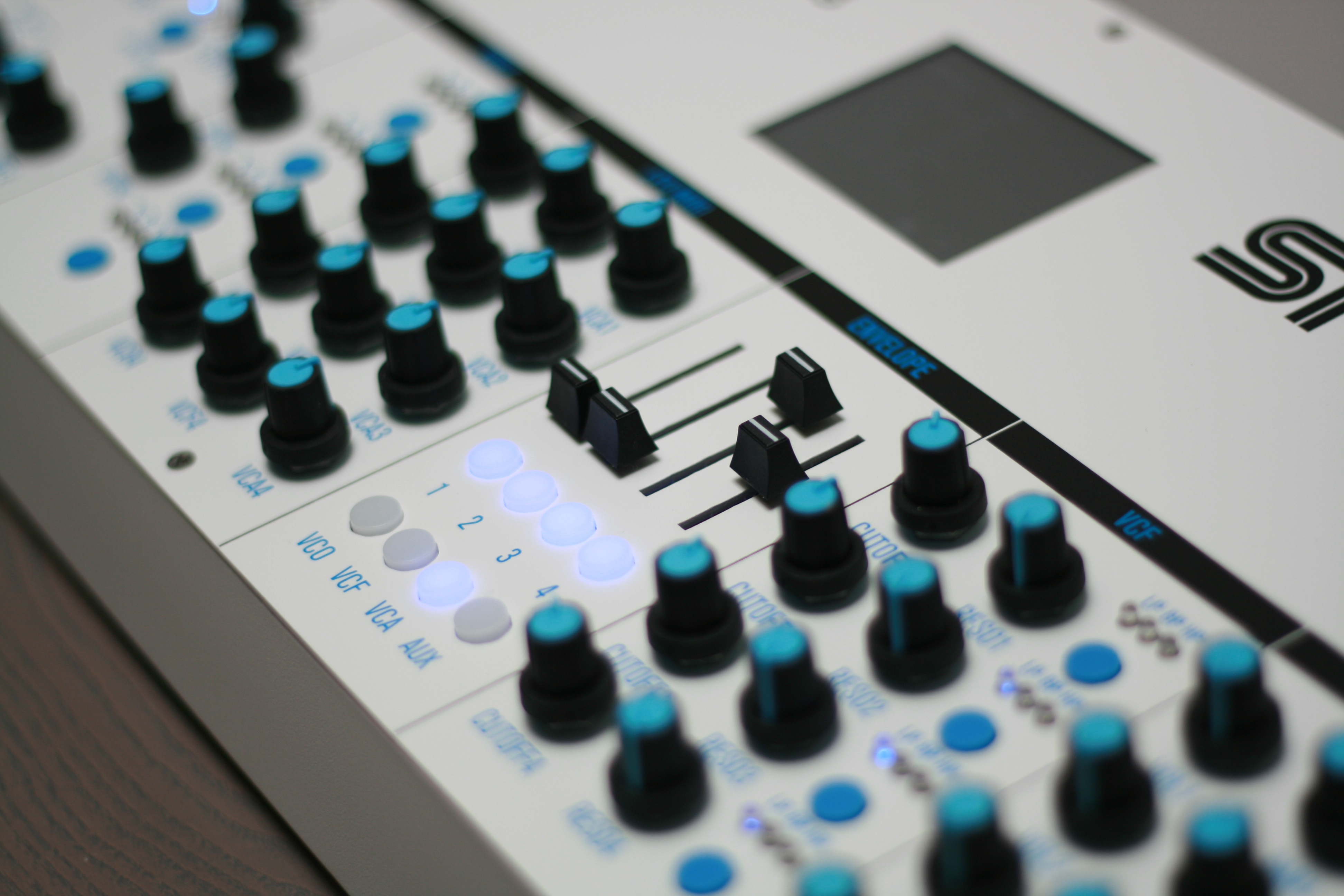The Story Of The ST4
You may know about this unique hybrid synthesizer / tracker from us. It just went on sale, it went through a successful Kickstarter, but did you know the real beginnings, and all the nitty gritty? Read on!
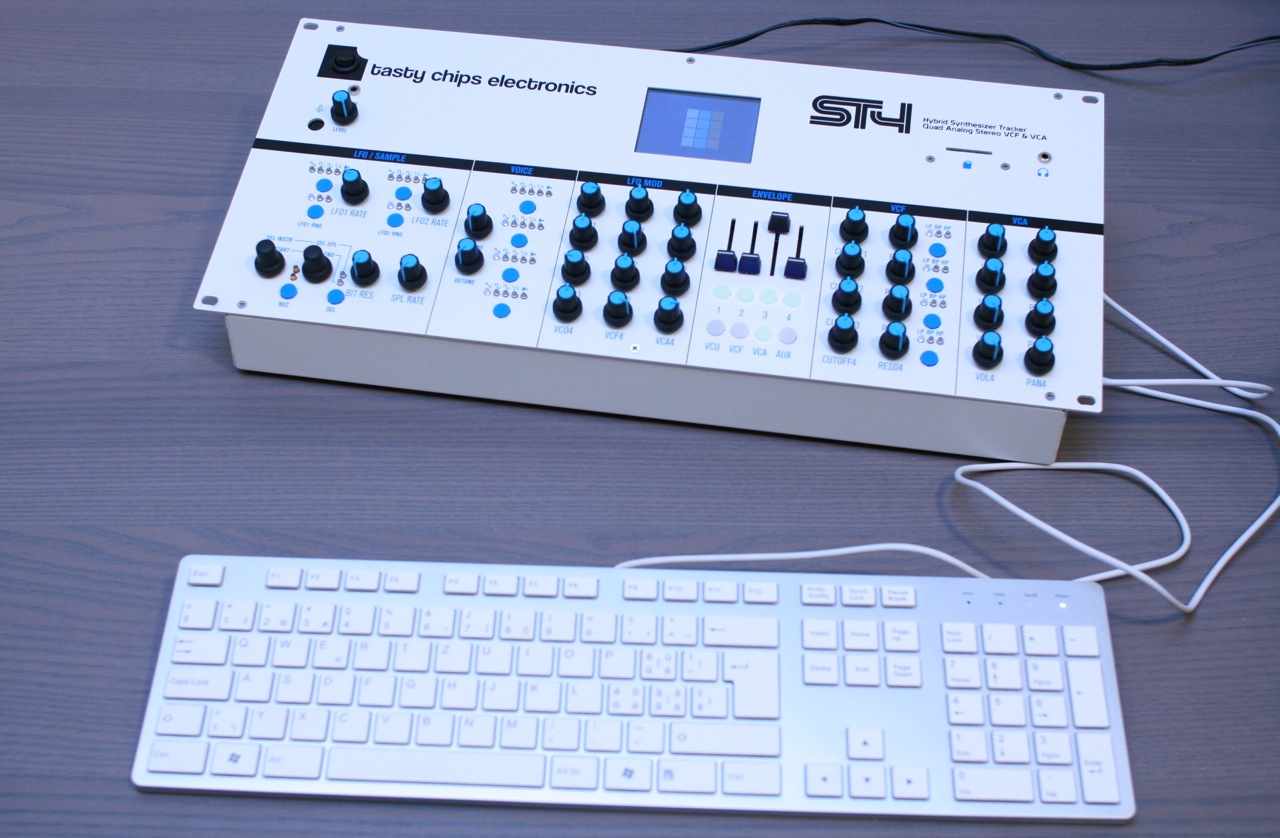
It all began way back in 2014. I, Pieter, had realized the market for analog monosynth had become flooded. At that time I had worked on a prototype monosynth with a good bunch of knobs (the TCE-1M) and had concluded that it was easily possible, even with all the black magic of analog circuit design and layout. But there were many many competitors. And even the big companies were starting to show interest: Arturia, Korg, Roland, you name it.
Logically, the analog polysynth was next and early 2014 I was working my ass off to get a prototype up and running. Actually, a hybrid synthesizer seemed most practical. Analog VCO’s, like the Piggy’s are a hassle to calibrate and having to do 4+ of those for each unit.. Well, I didn’t feel like it. Plus, like for instance on the Shruthi-1 by Mutable Instruments, digital oscillators added so much power to influence the timbre. It was hard to ignore.
At some point I remember that I had 8 digital oscillators running on the Arduino DUE (a microcontroller board which at that time was the most powerful out there). I generated those using the DUE’s PWM hardware pins and I used even more PWM’s for generating CV’s. It actually didn’t sound bad at all, and CPU usage was low. I also worked a little on the VCF hardware. Steiner-Parker seemed to be the most logical, as it was characteristic as hell, multi-mode, and fairly easy to build. A tip from my mate STU. The VCA’s could be basic OTA stuff. Cheap and efficient.
Conceptually the polysynth was intended nothing more than that. Digital oscillators, perhaps 8, and 8 analog VCF’s and VCA’s. A bunch of knobs to set up your patch and then switch instruments using MIDI CC or using the on-board rotary encoder. A small character display would also be included.
In the middle of things, STU came up to me and was very enthousiastic about all the synth developments I had made, and being a long time fan of his music, it was hard to resist. He wanted to do a special synth, not a generic one like I was making. In retrospect, that was a mixed blessing. A unique instrument with its own idiosyncrasies and niche, that would make some musicians a lot happier, and we wouldn’t have to compete with the big lads directly.
Read more about the original concept in this huge-ass PDF! original concept and development This more highlights STU’s concept, is a bit older document, but contains more photos than here.
On the other hand, the concept was so eclectic that we wondered what niche this would actually apply to, and also how hard this would be to engineer: A microphone and sampler? 2 analog voices and 2 digital? A built-in tracker (basically a sequencer as used on the old 16 bit home computers).. with a (for a synth) luxurious display?
BTW, a lot of people compare the ST4 with the OP-1 from Teenage Engineering. Could be the similarly playful company names, could be that they are both synths with on-board sequencers. But they are actually very different machines. OP-1 is meant purely as a mini/portable music studio, the ST4 is meant as a high-character synth+chip tracker, even for live purposes: all channels can be directly influenced live: that’s a lot of knobs and buttons, but it pays off!
Far too brave, we decided to push forward. I’d take STU on board as a project partner, if it worked out we might join forces more often. Somewhere in June 2014 we figured we’d have a prototype in September. Nothing was further from the truth.. It was a hellishly complex project with super high integration and fiendishly exotic features. All the eclectic features like the microphone, sample RAM, and the tracker.. And added to this my compulsion to want true polysynth functionality: i.e. one VCF and one VCA per channel.. made the ST4 project a nightmare.
I’ll spare you the details, but we suffered problems on every front. It all started with mixing analog and digital on the control boards. I wanted 10 bit resolution on the pots, but with all the flickering LEDs and clock lines around, that was next to impossible. Even worse was the mic pre-amp. Imagine.. A few millivolts signal surrounded by digital clocks and signals all over the place. After I separated digital and analog supply and ground (which cost several iterations) things were looking up, but even then the pots had to be digitally low-pass filtered.
The original ST4 concept had 2 analog voices and 2 digital ones. I changed that to all digital to spare me the drama. Also, there were a lot of dedicated buttons for the tracker. This was eventually dropped for USB keyboard support. A more sensible choice, if it were not for the fact that we were using an MCU: no operating system, no language support, rudimentary USB support.. So even in this form it wasn’t easy. Also there was the plan to have all envelopes directly accessible. That would have taken a 30 cm wide piece of panel and made the unit extremely expensive, and also might have required the front panel to split: a 70 cm wide aluminium panel will inevitably start bending under all the weight.
Besides all this bad news, we also had a somewhat regular meet-up session. STU had left The Netherlands for his hometown in Switzerland. So, occasionally I visited him or he came over to Utrecht. This worked out quite fine, and we could often develop and test a new feature (like the bitcrusher) in such a session. That often worked much better than plain-old Skype.
Somewhere in fall 2014 I had a “breadboard”, or more like spaghetti model ready. TODO: photo. There were real PCB’s, but the connections were done with jump wires. Error-prone and chaotic. The Steiner-Parker VCF had been replaced by an SVF (State Variable Filter) of own design. A SVF using OTA’s is not a new idea, but I added my own twist to it, at least. No external opamps were necessary. Buffering was done inside the LM13700 IC.. and it worked fine.
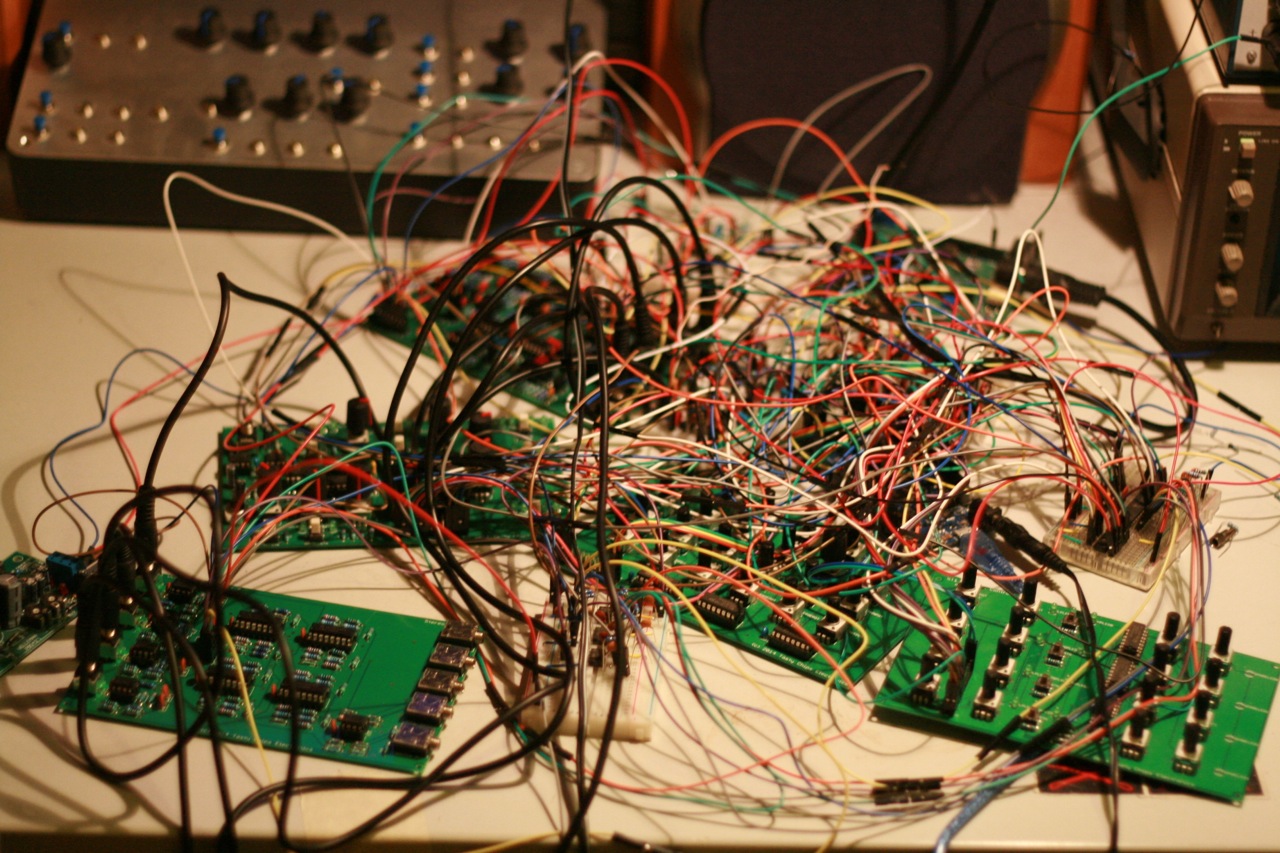
I remember programming the DUE’s microcontroller, the Atmel SAM3X8E, was an absolute joy in the beginning. Zappy DMA controllers, some even quite easy to set up. Easy and fast interrupts. And the beauty of a 32 bit ARM. I started in Arduino IDE, but because this project was far beyond a mere sketch (eventually 50.000 lines of C++), I decided to use my own makefile system and run from the prompt and sublime text ctrl-b / cmd-b for building and jumping to errors.
Growing out of an IDE was just the first of many “Hulk-like” moments. Painful and brutal, you realize that you have to completely replace a tool or a method. I can say that replacing the IDE was a good one, but replacing the internal PWM with external PWM was a bad one. External PWM chips aren’t as flexible. Fixed resolution, for instance. That resulted in the PWM carrier frequency being 10 kHz. Ok for CV generation, but absolutely terrible for EMC. You’d have the carrier whining through your audio like Satan’s dental drill. So, eventually we went for a bunch of simple audio DACs + a MUX to solve that. There are many more of such examples. And all the while the amount of free pins on the DUE got less and less. The display also ate up a huge amount. Integration just got harder and harder as time moved on. An effect to which many experienced engineers can testify.
In the meantime I took up a great freelance job offer (40 hours a week), and also got an intern. I don’t know how I made things meet, but apparently I did 😉
The intern, Koen, turned out to be a valuable asset. His project turned in to the Sawbench synth. Far simpler than the ST4, but a very nice sounding and easy to use piece of kit. Somewhere in winter 2015 that was done and the production needed to get underway. Luckily producing one synth and designing the other is a pretty good combination.
Work started on the tracker. Well, early on it was just a simple step sequencer with a single pattern. Also the digital oscillators were turned into nice anti-aliased ones. They sound very good up to about 5 kHz. Well, that’s the highest piano note, so above that I really couldn’t care 😉
More and more stuff was visualized on screen, like potentiometer settings, LFO levels, etc. USB support came slowly. The USB library from Arduino was only usable from a non-multitasking viewpoint. So in real life it was useless. I had to turn everything into state machines.. To let that USB code return as quickly as possible. That was a very frustrating but ultimately rewarding task.
The ST4 model of that year was the “woodboard” model with proper ribbon cables between all the PCBs and everything nailed down on a solid piece of wood. See the picture below 😉
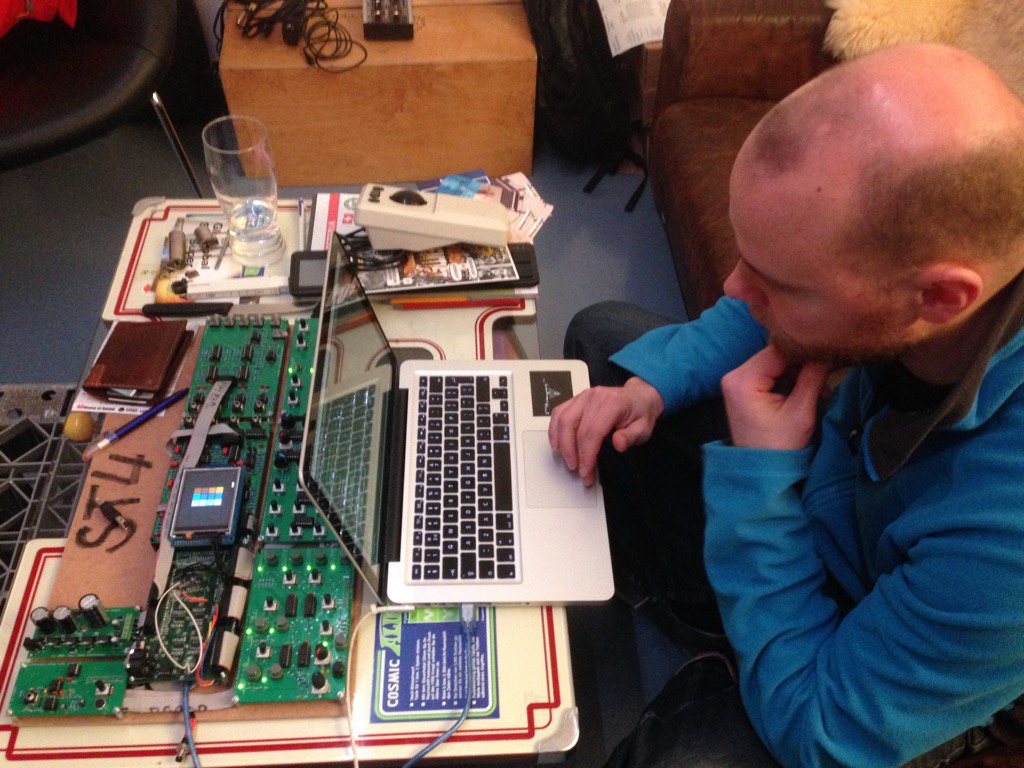
Also with the software it turned out that integration was hell. Consider the 96 kB of SRAM… consider semi non-existent libs for USB keyboard handling, and minimalistic display libraries.. That means yes, all human interfacing stuff including GUIs, keyboard handling, language, etc, needs to be done by the same coder. I was used to this, many years of game and demo coding had hardened me, but the ST4 still was special. The thing is so feature-rich, yet so underpowered in hardware and software libraries, that almost every new feature will turn into a hassle to code.
2015 really was a damn hard year in that respect. The easy part was getting the prototype casing from Protocase. It’s never exactly what you would like, but at least it’s sturdy (and heavy!) as fuck 🙂
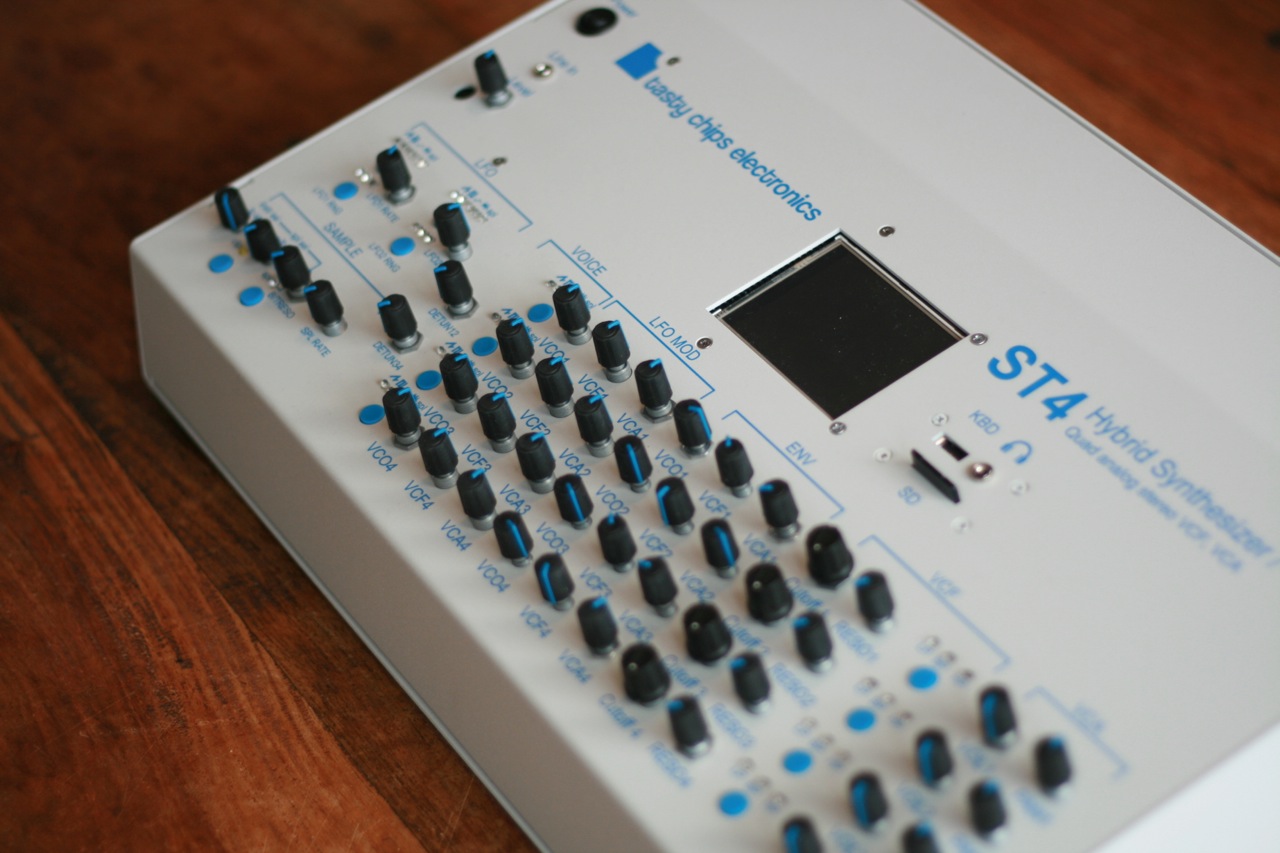
In terms of electronics, the mic board was finished. No real noise there. Perfectly fine for 8 bit sampling. The power supply part was also done. We figured an external AC/AC supply and internal AC/DC with classic regulators and diode bridge could work, and it did. The real work was spent on integration and prototyping, though. Countless times redesigning the wiring and pinning, resoldering, re-routing, re-ordering from PCB factories.. The ST4 was already functionally complete late 2014 (hardware wise), 2015 was only refining and software!
So, late 2015 that prototype was finally done.. It worked very nicely. You could show everyone what the thing could do without wires breaking or so 😉 The tracker and the live tweaking of the filters were especially fun to see people do. Even old musician friends from the Atari scene 🙂
In the meantime I decided to split with STU because I didn’t feel the cooperation worked well enough. As it turns out, making a synth is 90% execution and 10% concept. And the bigger the synth, more the more it skews those numbers! A full-time concept maker (and general techy/musician) is perhaps not best in such a super-critical project.
Still, we decided to do the Kickstarter campaign together. We joined up and shot a video together with a professional cameraman / editor. Then I put the Kickstarter campaign up early 2016. Since we’d already won a Kickstarter for the Sawbench, we’d thought it’d be easier this time. Well, yes and no. People were much more enthousiastic about the ST4. We became big in Japan overnight, even 😉 tens of thousands of views on all kinds of social media. People loved it. Yet the number of pledges was not in proportion. In the end, we just made it. The last night I couldn’t sleep and just sat at the keyboard trying to hype the thing up.
This was one of the biggest things I learned. What people love and what they buy are two different things. Sure, there’s always an overlap, but with the ST4 that turned out to be pretty small. We were puzzled by this. Not everyone can afford a Ferrari, but this is a (simple) Ferrari at rock-bottom price! A 4 channel hybrid with 40 knobs and countless of buttons and LEDs, a gazillion interfaces, a relatively large full color display (for a synth), pretty damn powerful unique functions.. for a mere 800? And most of it is not cheap plastic and consumer parts like in many modern budget synthesizers. It’s all durable metal, automotive rotary encoders, metal sliders! My hypotheses to explain this effect is that either the interested people are poor, the rich guys can’t believe it’s that good, or people don’t trust larger sums of their money with a new brand. Most likely all of the above.
Still, we made it. I asked Jasper and Koen, by then my partners in crime, to help out a bit and they did. I asked a skilled graphic designer (Nuey San Waldman) to design the front plate graphics, logo’s and everything, and he did. I refined the firmware and the last bits of hardware revision were done early summer 2016.
After that the hardware assembly and making of all the DIY kit bags started. We were already finished in August! In the background there was the casing design. The Sawbench had been much easier. The ST4 was multi-mount: 19″ rack and desktop, and there was just so much stuff inside. To shrink down from the over-dimensioned prototype casing down to the sleek one we have now, loads of boards needed to be resized. So we had to assemble some boards all over again.
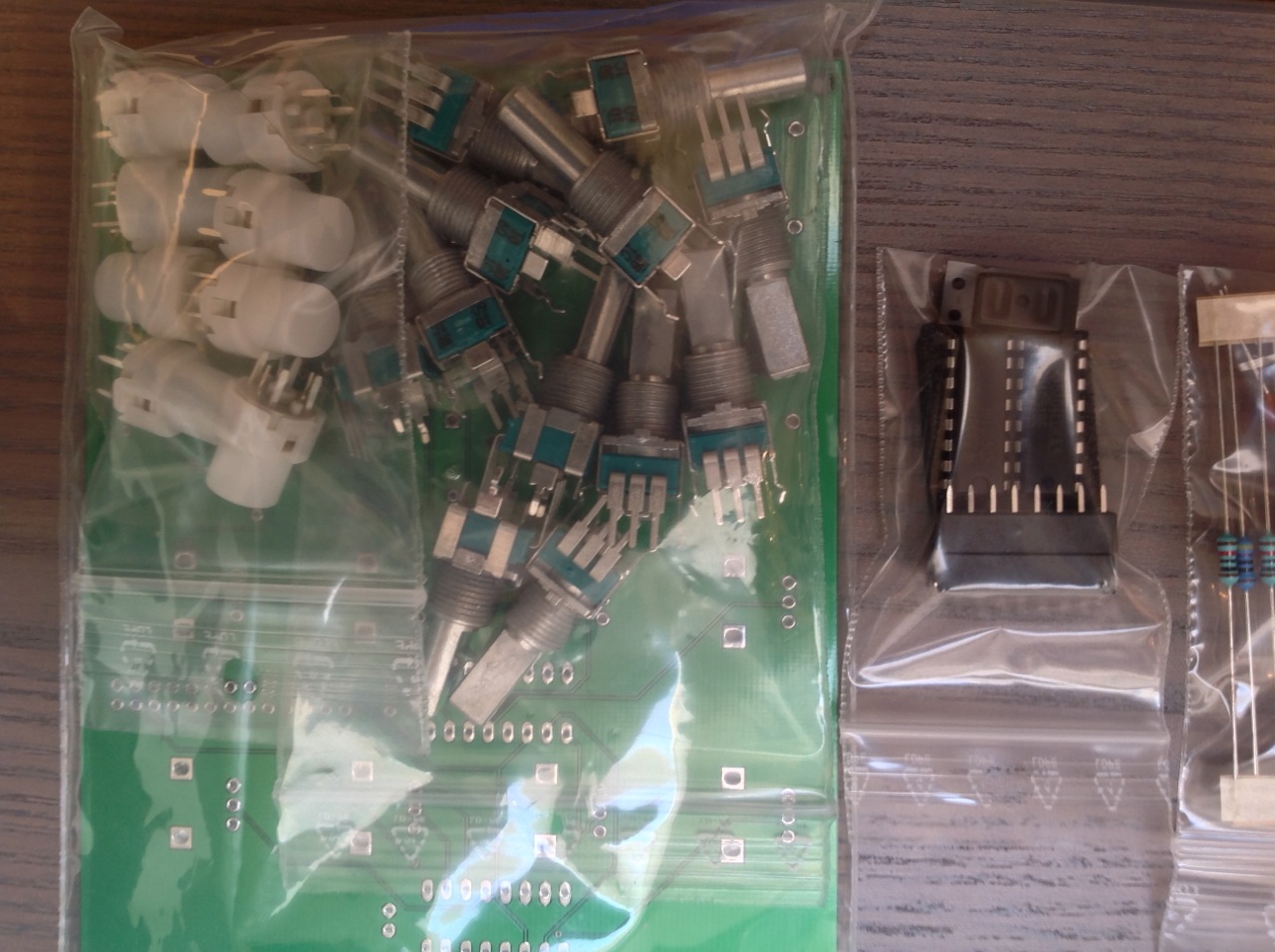

But most of it was just finding the right factories for metal, powder coating and silkscreen paint. Iterating and negotiating. That, all in all, took nearly half a year. But in February 2017, a whole year after the Kickstarter, it finally all came together. The final product is very good, if we may say so ourselves. Sure the firmware still has some hick-ups when using some of the more advanced features, but these are being ironed out as you read this. The thing is beautiful to look at and handle. The pots and knobs are the highest quality you can expect. There’s visual feedback on everything and there’s tons of way to use it. Not in the least tracking it live, or using a PC keyboard to play and hack in notes, and then wiggle some VCF controls. What machine can do that? 🙂 We’re extremely proud that we pulled through and did it the hard way. Because love is for the hardest people.
